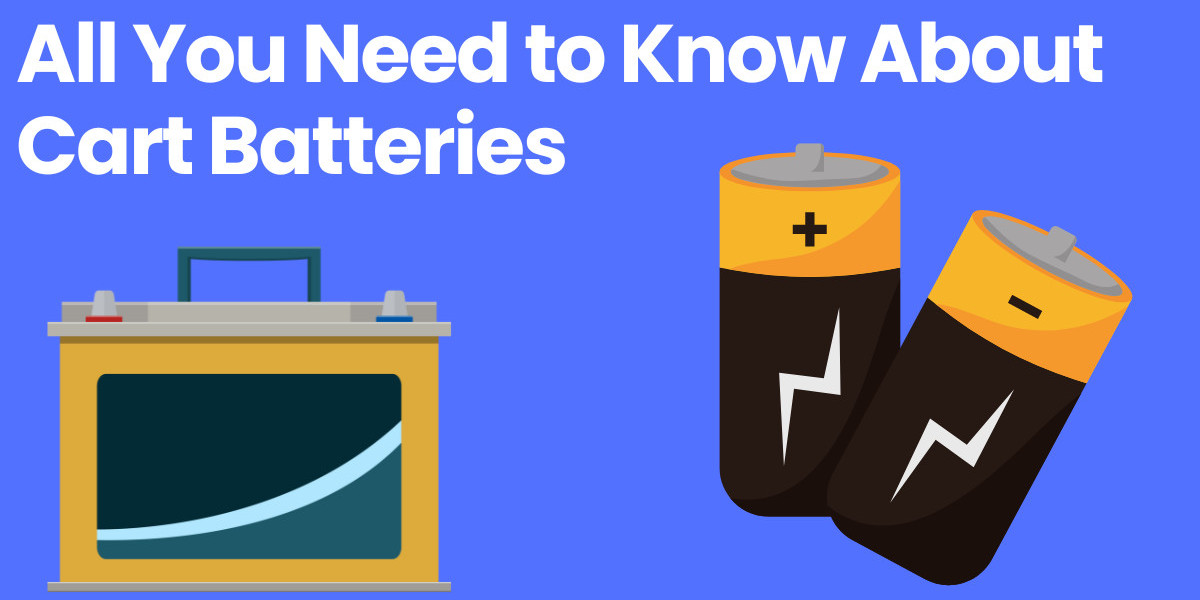In today's world, cart batteries have become essential for a variety of applications. From powering golf carts and utility vehicles to facilitating mobility scooters and recreational vehicles, these batteries ensure that our rides are smooth, reliable, and efficient. Understanding the different types of cart batteries, their maintenance, and the benefits they provide is crucial for anyone who relies on these power sources.
Types of Cart Batteries
When it comes to cart batteries, there are several types to consider, each with its unique advantages and disadvantages. The most common types include lead-acid batteries, lithium-ion batteries, and AGM (Absorbent Glass Mat) batteries.
Lead-Acid Batteries:
- Flooded Lead-Acid Batteries: These are the traditional cart batteries that have been around for decades. They require regular maintenance, such as topping up with distilled water, and are relatively inexpensive. However, they have a shorter lifespan compared to other types.
- Sealed Lead-Acid Batteries: These batteries are maintenance-free and sealed, preventing any spills or leaks. They are slightly more expensive than flooded lead-acid batteries but offer a longer lifespan and greater convenience.
Lithium-Ion Batteries:
- Benefits: Lithium-ion cart batteries are becoming increasingly popular due to their lightweight nature, longer lifespan, and higher energy efficiency. They charge faster and can handle more charge-discharge cycles than lead-acid batteries.
- Drawbacks: The primary downside is their higher cost, but many users find the investment worthwhile due to the long-term benefits and reduced maintenance requirements.
AGM Batteries:
- Advantages: AGM batteries are a type of lead-acid battery that uses a glass mat to absorb the electrolyte, making them spill-proof and maintenance-free. They offer good performance, longer lifespan, and can withstand higher vibrations.
- Disadvantages: They are generally more expensive than flooded lead-acid batteries but provide a balance between cost and performance.
Importance of Cart Batteries in Different Applications
Cart batteries play a crucial role in various applications, ensuring that electric vehicles perform optimally. Here are some common uses:
Golf Carts: Golf carts rely heavily on cart batteries to navigate the expansive greens of golf courses. A reliable battery ensures a smooth ride, consistent power delivery, and a pleasurable experience for golfers.
Utility Vehicles: Many industries use utility vehicles powered by cart batteries to transport goods and personnel across large facilities. These batteries need to be durable and long-lasting to handle daily operations efficiently.
Mobility Scooters: For individuals with mobility challenges, cart batteries power scooters that provide independence and mobility. A dependable battery ensures that the scooter remains operational throughout the day, offering peace of mind to users.
Recreational Vehicles: Cart batteries are also used in recreational vehicles, such as ATVs and electric bikes. These batteries need to be robust and capable of handling various terrains and conditions.
Choosing the Right Cart Battery
Selecting the right cart battery is essential for optimal performance and longevity. Here are some factors to consider:
Battery Capacity: Measured in ampere-hours (Ah), the capacity of a battery determines how long it can run before needing a recharge. Higher capacity batteries are ideal for heavy-duty applications or extended usage periods.
Voltage: Ensure that the voltage of the battery matches the requirements of your cart. Most golf carts, for instance, use 36V or 48V systems, and using the wrong voltage can lead to performance issues or damage.
Maintenance Requirements: Consider how much maintenance you're willing to perform. While flooded lead-acid batteries require regular water top-ups, AGM and lithium-ion batteries are maintenance-free.
Cost: Budget is always a factor. While lithium-ion batteries are more expensive upfront, they offer longer lifespans and lower maintenance costs, which can be more cost-effective in the long run.
Brand and Warranty: Choose a reputable brand with good reviews and a robust warranty. This ensures you get a quality product and support if any issues arise.
Maintaining Your Cart Battery
Proper maintenance is key to extending the lifespan of your cart battery and ensuring optimal performance. Here are some maintenance tips:
Regular Charging: Always charge your cart battery after use. Leaving it discharged for extended periods can lead to sulfation, which reduces its capacity and lifespan.
Clean Terminals: Keep the battery terminals clean and free from corrosion. Use a mixture of baking soda and water to clean the terminals if necessary.
Check Water Levels: For flooded lead-acid batteries, regularly check the water levels and top up with distilled water if needed. Never overfill the cells, as this can lead to spills and damage.
Proper Storage: If you're storing your cart for an extended period, ensure the battery is fully charged and disconnected. Store it in a cool, dry place to prevent self-discharge and damage.
Avoid Deep Discharges: Try to avoid discharging your battery completely. Deep discharges can significantly reduce the battery's lifespan.
Advancements in Cart Battery Technology
The field of cart batteries is constantly evolving, with new technologies and improvements emerging regularly. Some of the latest advancements include:
Solid-State Batteries: These batteries use solid electrolytes instead of liquid ones, offering higher energy densities, faster charging times, and improved safety.
Smart Batteries: Equipped with built-in sensors and monitoring systems, smart batteries provide real-time data on the battery's health, charge status, and performance, allowing for better maintenance and management.
Wireless Charging: Advances in wireless charging technology are making it possible to charge cart batteries without the need for physical connections, enhancing convenience and reducing wear and tear on connectors.
Environmental Impact of Cart Batteries
As the world moves towards greener and more sustainable solutions, the environmental impact of cart batteries is a significant consideration. Here's how different types of cart batteries stack up:
Lead-Acid Batteries: While they are recyclable, the production and disposal of lead-acid batteries pose environmental risks due to the toxic nature of lead and sulfuric acid.
Lithium-Ion Batteries: These batteries are more environmentally friendly than lead-acid batteries due to their longer lifespan and higher energy efficiency. However, the mining of lithium and other rare earth metals used in these batteries can have environmental impacts.
Recycling and Disposal: Proper recycling and disposal of cart batteries are crucial to minimizing environmental harm. Many manufacturers and retailers offer recycling programs to ensure that old batteries are disposed of responsibly.
Conclusion
Cart batteries are an indispensable part of modern electric vehicles, providing reliable and efficient power for a wide range of applications. Whether you're using them in golf carts, utility vehicles, mobility scooters, or recreational vehicles, understanding the different types of cart batteries, their maintenance requirements, and the latest advancements can help you make informed decisions and get the most out of your battery.








